
Carob Tree Friends of the Urban Forest
0 likes, 0 comments - tammypool on December 2, 2022: "虜 Yesss, Christmas is loading….quickly!! Are you ready?? 朗 EYE ARISE is 20% off til DEC."
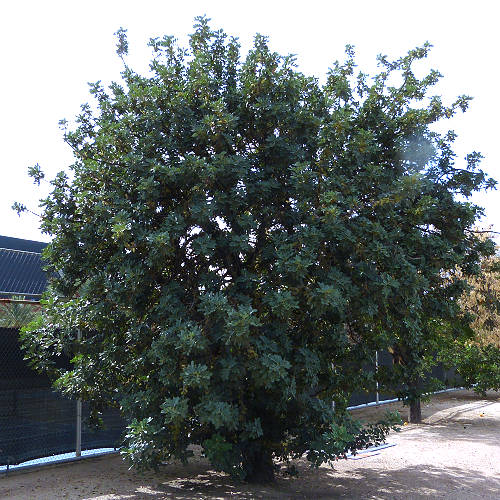
Growing Carob Ceratonia siliqua
Scientific Name: Ceratonia siliqua Family: Fabaceae Identification Habit: The Carob can grow up to 55 ft (17 m) tall with a 33 in (85 cm) or wider trunk. It has a thick trunk and a broad, low canopy. Figure 1: Short canopy of a Carob 4 Leaves: The leaves resemble a feather and leaflets are arranged on opposite sides of the stalk.
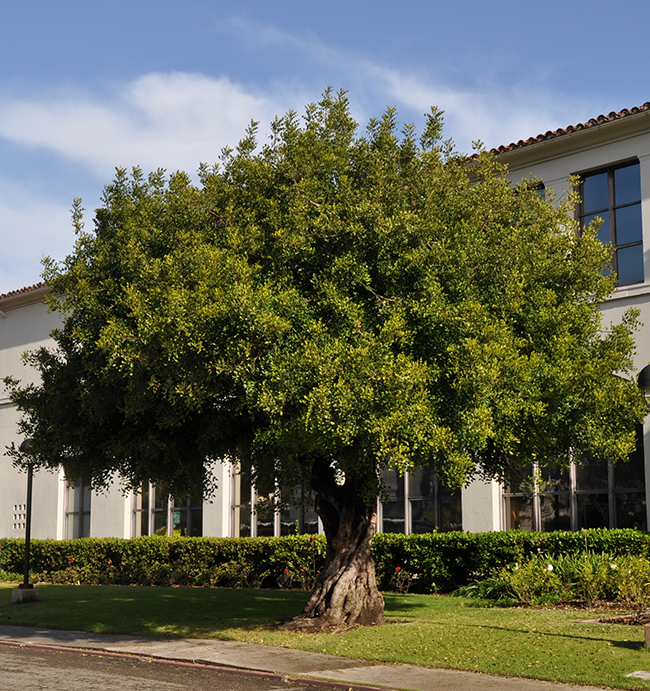
Carob tree Sacramento Tree Foundation
Ceratonia siliqua, commonly known as the carob tree or carob bush, from Arabic خَرُّوبٌ (kharrūb) and Hebrew חרוב (haruv), St John's-bread, or locust bean (not to be confused with the African locust bean), or simply locust-tree, is a species of flowering evergreen shrub or tree in the pea family, Fabaceae.

Ceratonia Siliqua Or Carob Tree Grow A Chocolate In Your Garden
Ceratonia siliqua, the scientific name of the carob tree, derives from the Greek κερατωνία keratōnia, "carob-tree" (cf. κέρας kéras, "horn"), [9] and Latin siliqua "pod, carob". [10] In English, it is also known as "St. John's bread" [11] [a] and "locust tree" [13] (not to be confused with African locust bean ). [14]
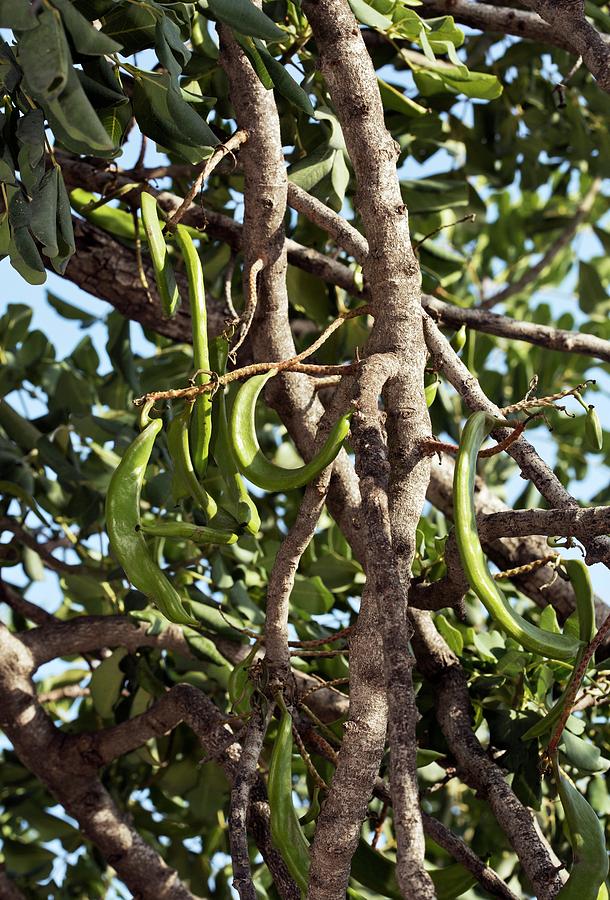
Carob Tree (ceratonia Siliqua) In Fruit Photograph by Bob Gibbons Pixels
Ceratonia siliqua carob tree, St. John's bread, locust tree Fabaceae (Leguminosae) eastern Mediterranean Pronounciation: Ser-a-TOE-nee-a sa-LI-qua Hardiness zones 9, 13-16, 18-24 Landscape Use: Dense shade tree for xeric landscape design themes.
Trees of Santa Cruz County Ceratonia siliqua Carob Tree
0.8 cups. every 9 days. Carob Tree needs 0.8 cups of water every 9 days when it doesn't get direct sunlight and is potted in a 5.0" pot. Use our water calculator to personalize watering recommendations to your environment or download Greg for more advanced recommendations for all of your plants. Water 0.8 cups every.

Carob tree (Ceratonia siliqua) seed pods Stock Image C002/3295
Sampled trees included Eucalyptus camaldulensis (n = 65 trees; 34%), which is present in all studied localities, and common trees from the Mediterranean area, namely the carob tree (Ceratonia siliqua) and the Mediterranean stone pine (Pinus halepensis), which were included when sampling the Eastern coast of Spain (n = 25 trees; 13.1% and n = 15.

Ceratonia siliqua Carob Tree, Locust Bean Buy seeds at
An attractive small tree, Ceratonia siliqua is commonly called the Carob tree, and it is the tree that produces the carob pods, or beans used as a chocolate substitute. Being from the Mediterranean including areas in Turkey, these are a rough tolerant hardy tree. Characterised by dense foliage, it is deep brown pods that contain the pulp used.
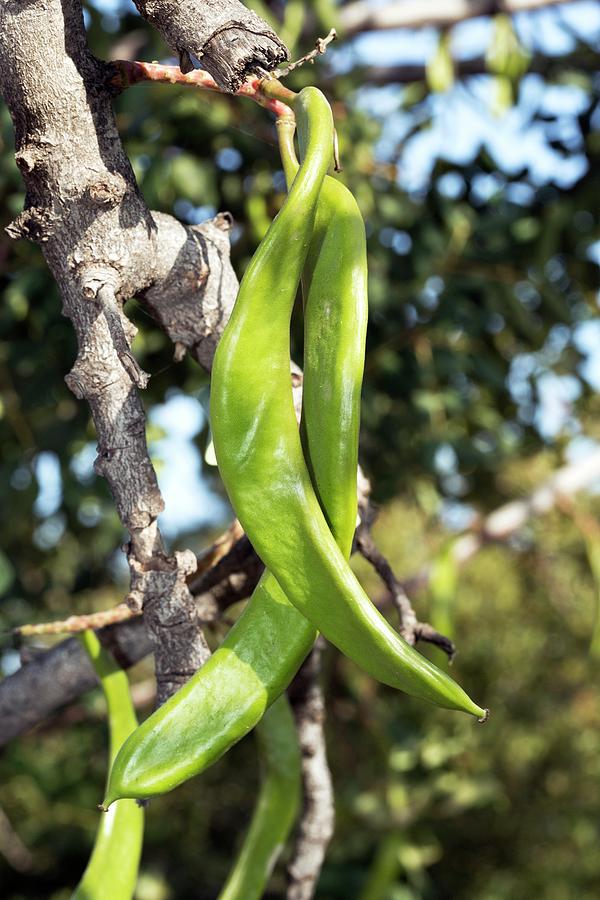
Carob Tree (ceratonia Siliqua) In Fruit Photograph by Bob Gibbons
The carob ( KERR-əb; Ceratonia siliqua) is a flowering evergreen tree or shrub in the Caesalpinioideae sub-family of the legume family, Fabaceae. It is widely cultivated for its edible fruit pods, and as an ornamental tree in gardens and landscapes. The carob tree is native to the Mediterranean region and the Middle East.

Carob tree, Ceratonia siliqua for sale
The carob tree (Ceratonia siliqua), also known as the locust bean tree, is a perennial tree native to the Mediterranean, where it has been cultivated for centuries.It has attractive, leathery, dark-green evergreen leaves, small scented flowers and edible pods. Carob seeds are so consistently similar in weight that they became a standard measure of weight for precious things such as jewels and.
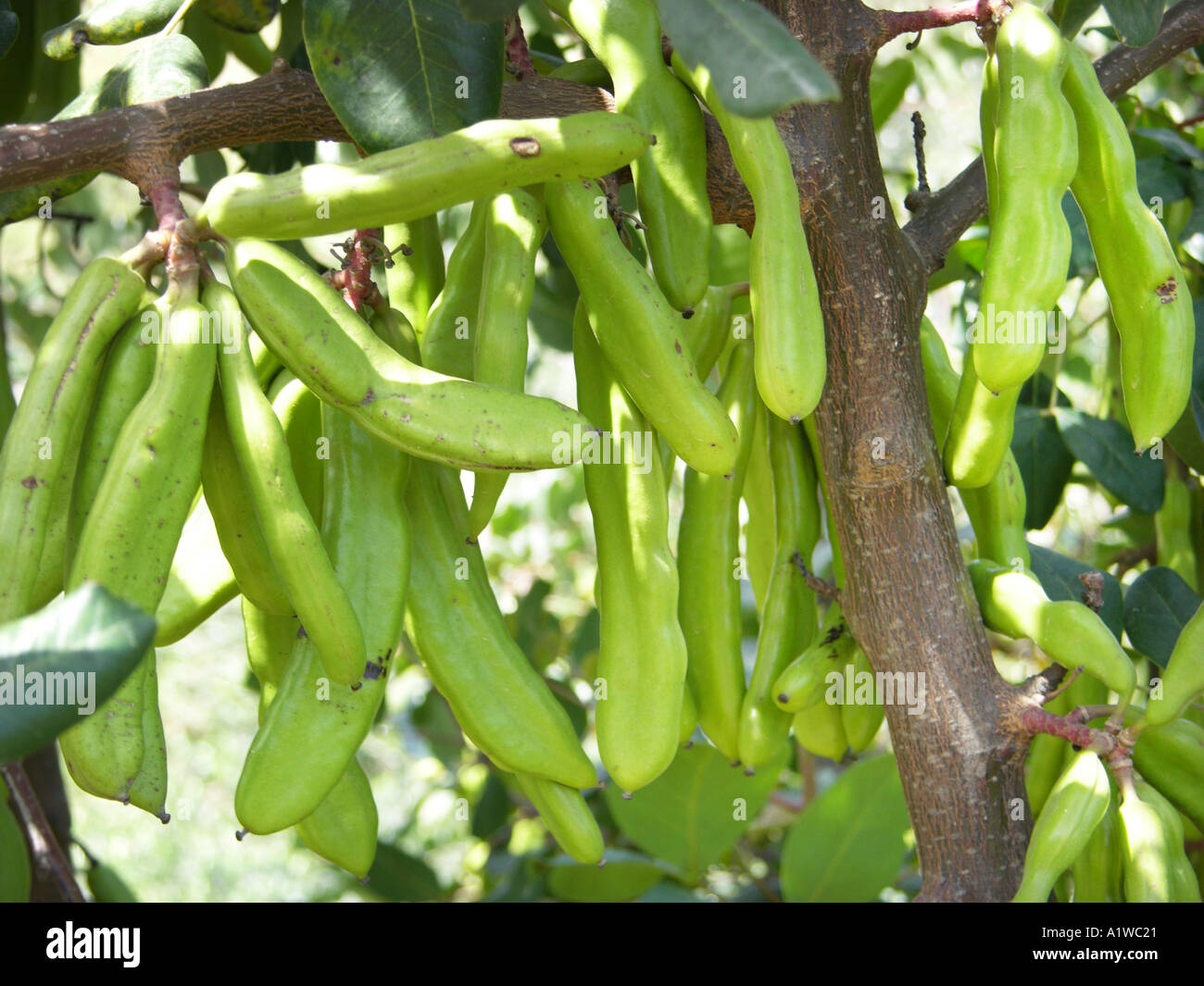
Ceratonia siliqua CAROBTREE CAROB tree fruit in CRETE Greece KRETA
carob, ( Ceratonia siliqua ), tree of the pea family ( Fabaceae ), grown for its edible pods. Carob is native to the eastern Mediterranean region and is cultivated elsewhere.

Ceratonia siliqua Carob Tree, Locust Tree Jurassicplants Nurseries
The carob tree, Ceratonia siliqua (also called algarroba) is a polygamous, termophilous and typical evergreen species of the leguminous tree. It is a member of the pea family, Fabaceae, which grows throughout the Mediterranean basin, mainly in Spain, Italy, Portugal, Morocco, and Turkey. Carob trees grow best in calcareous soil, preferably near.
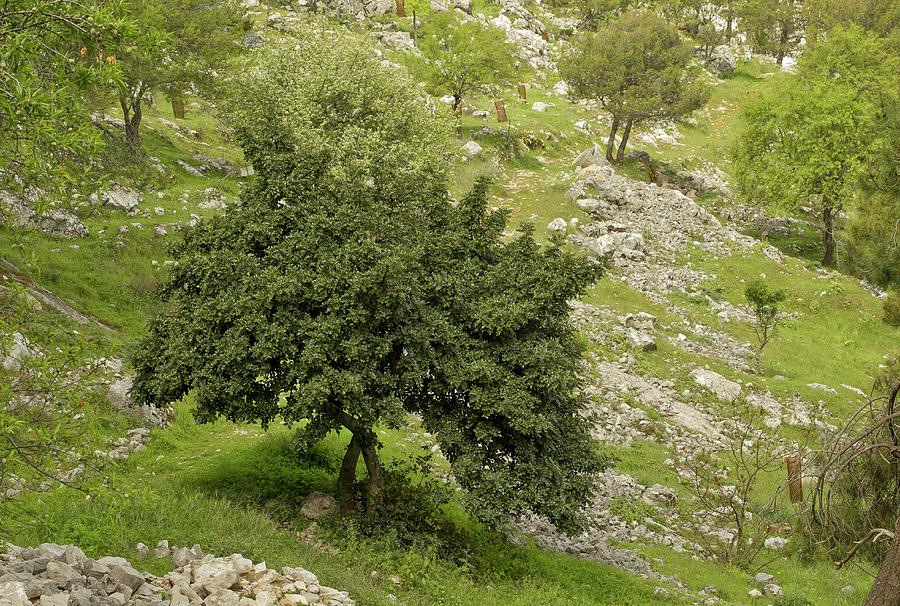
Carob Tree (ceratonia Siliqua) Photograph by Bob Gibbons/science Photo
Carob should be spaced 9 inches (23 cm.) apart in the garden. For the home gardener, an established 1-gallon (4 L.) carob tree start might more prudently be purchased from a nursery. Keep in mind that conditions in your garden must closely mimic those of the Mediterranean or grow carob in a greenhouse or in a container, which can be moved into.
Trees of Santa Cruz County Ceratonia siliqua Carob Tree
Carob trees (Ceratonia siliqua L.) regenerated in vitro can acclimatize successfully to match the field performance of seed-derived plants. Trees: Structure and Function , 26(6) 1837-1846. Crossref
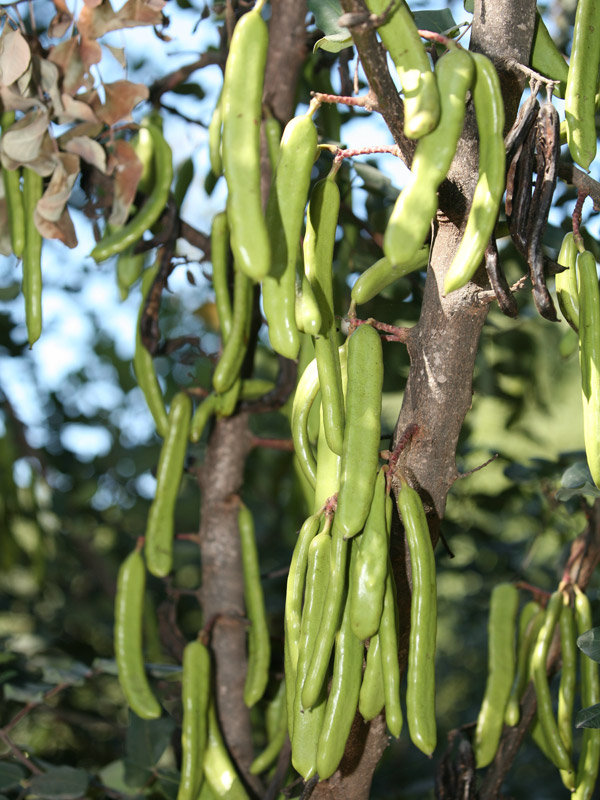
Chocolatelike Carob Tree (ceratonia siliqua) Urban Tropicals
Carob is a flowering evergreen tree in the bean family growing at maturity to 50 feet and a native to the Mediterranean region and Iran where, in its native environment, it is often found on rocky places near the sea shore.
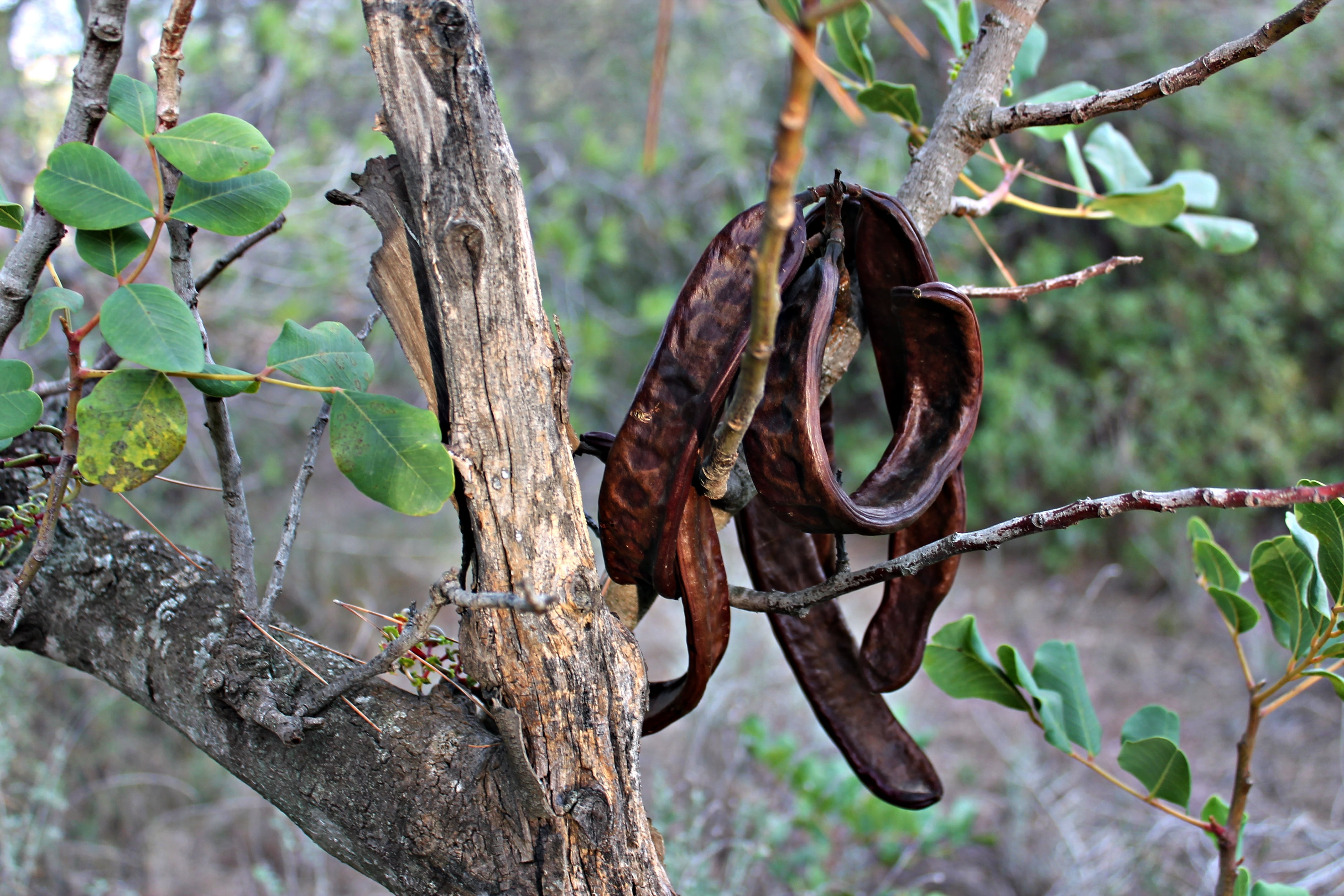
Ceratonia siliqua 50 Fresh Seeds Carob Tree Greek Variety FREE SHIPPING
Ceratonia siliqua carob A Mediterranean evergreen shrubby tree with thick brown bark and dark green, leathery, pinnate leaves. Tiny green-tinted red flowers in racemes 2-6cm long, during spring, are followed by edible black-brown leathery pods containing a sweet pulp Other common names algoroba bean algorroba bean see more carob tree